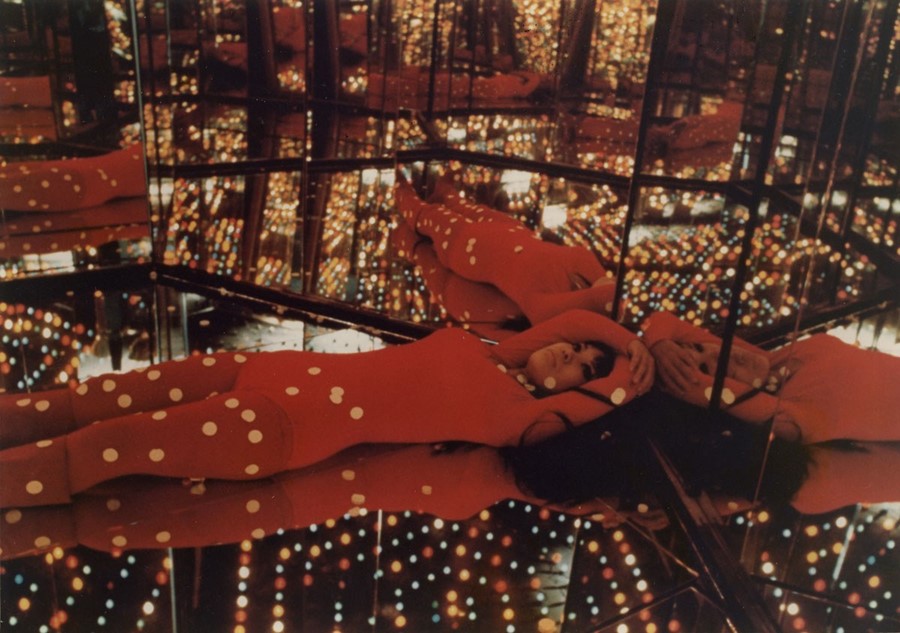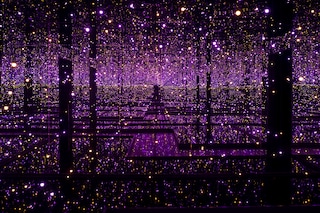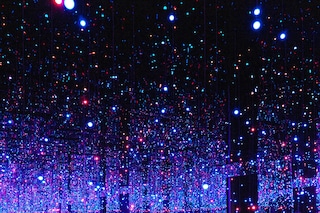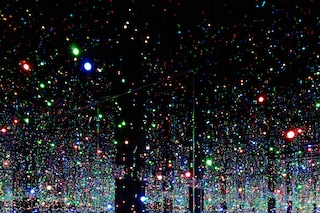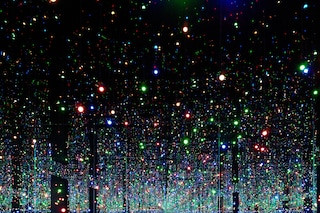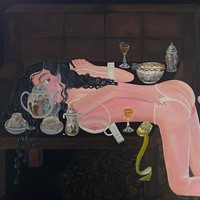A look back at the legendary mirrored installations and how they brought the Japanese artist back from a mental crisis point
Yayoi Kusama has become the highest-selling female artist in the world in recent years. In 2019, it was reported that her work accounted for 25 per cent of the market of all auction sales of art made by women. While she is no doubt a polymath, working in a number of different mediums – from pumpkins to polka dots – her signature form is arguably the series of installations known as the Infinity Mirror Rooms. An immersive experience of interiors lined with mirrors creating the illusion of endlessly recurring spaces, these works have become increasingly in demand. During the pandemic lockdown, The Broad museum in Los Angeles even made one of her mirror rooms, “The Souls of Millions of Light Years Away” (2013), available to view online, enabling visitors from around the world to experience Kusama’s exploration of eternity.
However, her success has been hard-won. Despite having created the mirror room form in 1965, another artist subsequently made their own mirrored installation and was given credit for pioneering the idea. This injustice may have precipitated a crisis in Kusama’s life but, thankfully, mirrors would also play a role in her eventual recovery from this difficult time.
Take a look through the gallery above to revisit some of Kusama’s most renowned works of art while, below, we take a look at the secret history of the birth and development of her seminal Infinity Mirror Rooms.
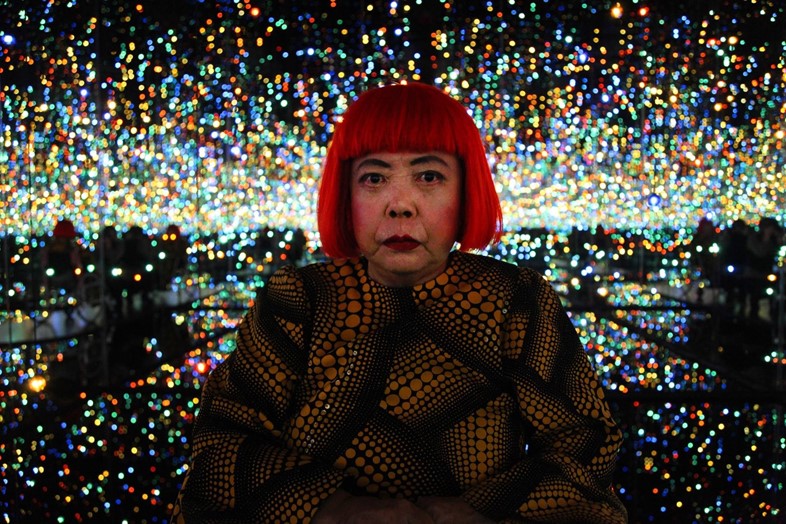
The origin of Kusama’s interest in the idea of the mirrored room lies in her work as a child. Born in Matsumoto, Japan, in 1929, she made thousands of small paintings during her early years which she later developed into sculptures. Identifying this as the beginning of her desire to create an infinite series of images, the concept would eventually come to fruition in her creation of a mirrored room environment.
Kusama moved to America in 1957, arrived in New York in 1958, and staged her first solo exhibition in the city in 1959 at Brata Gallery on East 10th Street. Over the next few years, the Japanese artist participated in a number of shows around New York as she developed her work.
It was the Castellane Gallery, located at 1078 Madison Avenue on 81st Street, which would later play host to her very first mirror room. Titled “Infinity Mirror Room – Phalli’s Field (Floor Show)”, this solo exhibition in November 1965 consisted of a space lined with mirrors around a floor displaying a large number of polka dot-emblazoned sewn objects, designed to be phallic in shape, which, when reflected in the mirrors, created the illusion of these objects recurring infinitely into the space around the viewer. Now-iconic photographs of Kusama were taken of her within her installation, wearing a red jumpsuit, reflecting her own self in her art as infinitely as the objects on the floor. “Phalli’s Field (Floor Show)” would be followed by the next mirror room in her work, “Peep Show” (or “Endless Love Show”), which went on display at the same gallery in March 1966.
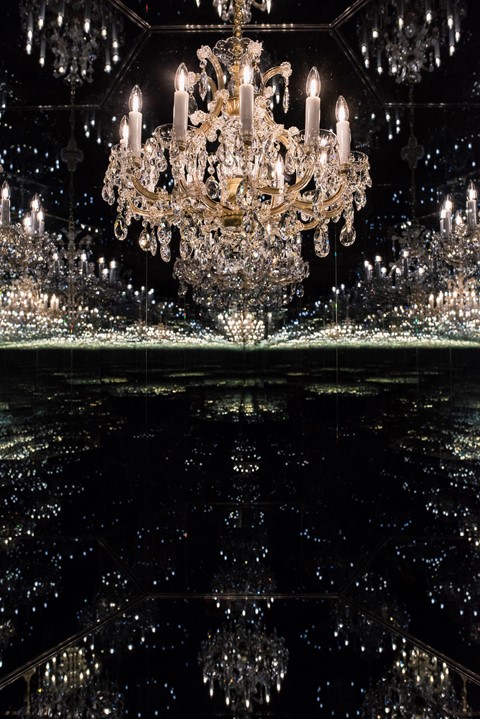
However, that same year, another New York-based artist began drawing a huge amount of attention for their mirrored installation artworks, overshadowing Kusama’s own breakthrough work in this field. In 1966, Lucas Samaras’ “Room No. 2” (also known by its alternative title “Mirrored Room”) went on public display at the Pace Gallery in NYC. Like Kusama’s works, Samaras’ room also used a mirrored interior which the viewer was invited to step inside, creating the impression of infinite space within the installation.
Due to the gallery’s high profile, Samaras’ exhibition garnered more attention than Kusama’s earlier shows and many people wrongly assumed he was responsible for creating this new form. Becoming deeply depressed, this incident was one of the factors which contributed to Kasuma’s thwarted suicide attempt around this time. The artist attempted to take her own life by jumping from the window of her apartment but she was saved from fatal injury when her fall was broken by a bicycle.
Throughout her life, Kusama has turned to art to help her through difficult times, and it was art that helped her recovery after this dramatic fall. Attending the 1966 Venice Biennale, she decided to launch her own show outside the official boundaries of the main exhibition. Like her rooms, the work she produced for Venice also included mirrored surfaces. Narcissus Garden consisted of 1,500 mirrored balls, some of which she offered to sell to Biennale visitors for $2 each before festival authorities stepped in to prevent any further sales.
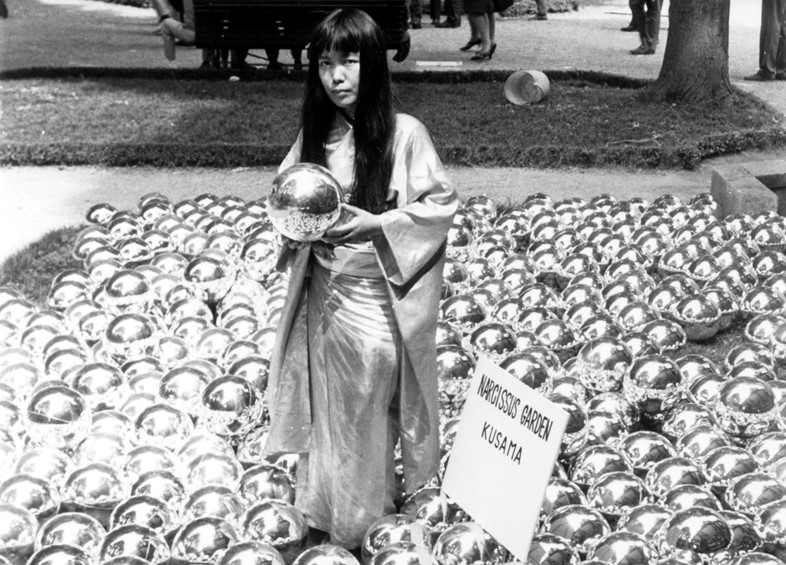
Kusama’s use of mirrored forms in Venice helped her recover from the crisis following her struggle for recognition. Fittingly, it would be Venice which would host Kusama’s later return to the mirrored room form, this time in an official capacity as Japan’s representative at the 1993 Biennale.
Since then, Kusama has gone on to create more than 20 mirror rooms and it has become an increasingly important part of her work as an artist. In recent years, she has also commented publicly on what she and some critics have viewed as Samaras’ appropriation of her work. During an interview conducted by Damien Hirst, he asked her what she thought the difference was between her work and Samaras’ mirrored room. “Lucas Samaras is always copying other artists’ work,” she replied. “His work lacks originality, I think. He made the mirrored room series inspired by my work. Therefore, my infinity room has nothing to do with his vision.”
Misconceptions about the origin of the mirrored room concept still occur occasionally. While organising a Kusama exhibition in Washington a few years ago, the curator Mika Yoshitake was contacted in advance by an unidentified artist who stated that Samaras had been the first to create a mirror room. The anonymous individual was taken aback when Yoshitake corrected him by telling him that Kusama was actually the pioneer of the form. However, most people are now aware that the creation of the mirror room environment stems from Kusama herself, and it has become the artform most commonly associated with the Japanese artist. It may have taken several decades, but she is now receiving the credit that she deserves.
Yayoi Kusama: Infinity Mirror Room opens at the Tate Modern from May 17
